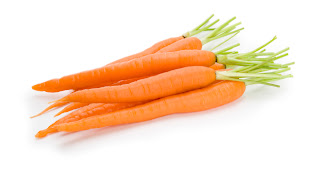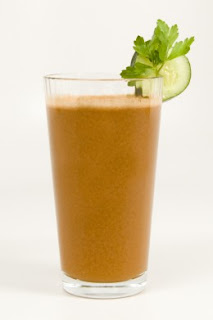Now that the holidays are solidly behind us, the reality of those New Year’s promises we made to ourselves are starting to settle in. Many of us start out the New Year with big plans for big changes…which is why all this month we’re focusing on the ‘little things’. That’s because small steps – taken together – can add up to big results, and are often easier to handle than huge sweeping changes that can be unsettling. In the last post, I made some suggestions for small changes you can make at the grocery store – that is, after all, where the path to healthy eating begins. But now that you’ve brought your healthy ingredients into the house, you want to make sure to keep them that way when it’s time to cook. And with just a few small changes, you can make every dish you prepare at home a little bit better for you.
Steps to a recipe makeover
When it comes to recipe makeovers, a good place to start is with your “go-to” foods – those dishes that you make over and over again. If you transform a recipe for a dish that you eat every week, the calories you cut out can really make a difference in the long run.
The first step in the makeover is to look over the list of ingredients, and see if you can make some healthy swaps to reduce fat and calories, or to boost the nutritional value. Would plain yogurt work in your dish instead of sour cream? Would ground turkey work just as well as ground beef? Could you add more fiber by using brown rice instead of white? Could you sneak some fruit into a salad or side dish? Using substitute ingredients that provide nearly the same taste is an easy way to reduce a hefty calorie count.
Next, look at the amounts of some of the ingredients to see if you can change them to make the dish healthier. If a recipe calls for frying, could you sauté or stir-fry instead to reduce the fat? Can you use less salt or sugar? Could you double the vegetables called for? You’d be surprised at how many calories you can save with just a few changes.
Don’t “wrong a right”
One caution, though – don’t be fooled into thinking that by starting with very low calorie ingredients, it means you have extra calories to “play with” when you cook. I run into this with my clients all the time. They’ll start with healthy, low calorie ingredients like fish and veggies, and then rack up huge amounts of calories once they start cooking. They’ll fry instead of grill, they’ll sauce instead of steam, and by the time they’re finished, they may as well have eaten a cheeseburger.
Ingredient swaps and tips for healthier dishes
Here are some of my best tips for cutting down on fat and calories when you cook, and also how you can make your dishes healthier by using more whole grains, or adding vegetables and fruits to your dishes. I’ve also put together a table of swaps you can try for some common ingredients that can help you lighten up your favorite recipes. Have fun experimenting, and don’t be surprised if you end up liking the healthier version even better!
- Add diced vegetables to soups, chili, meat loaf, casseroles, tuna or chicken salad and pasta sauce to reduce overall calories and boost nutrition.
- Season steamed vegetables with lemon, vinegar, herbs, garlic, onion and spices rather than relying on butter or sauces.
- Add fruits to salad for a change. Try fresh orange or tangerine sections, apples or kiwi. Use deep green leafy vegetables instead of iceberg lettuce for more nutrition.
- Frozen vegetables and fruits are just as nutritious and fresh, may be less expensive, and allow you to eat foods that might not be available all year. For example, loose-leaf frozen spinach or chopped vegetables can easily be added to soups and stews.
- You can thicken soups without added butter, flour or cream. Place some of the broth and vegetables in the blender and then stir back into the soup. Or, make your own ‘cream’ soups by cooking vegetables with broth, onions, garlic and seasoning – then puree it all in the blender with a little evaporated nonfat milk or soft tofu for a delicious creamy soup.
- Try different mustards and vinegars for seasoning salads and veggies without fat.
- Double the recipe for dishes that freeze well, such as soups, stews, and casseroles. That way, when you’re tired and don’t want to cook, you can pull something healthy from the freezer rather than pulling into the drive-through.
Try these simple recipe swaps:
If the recipe calls for… | Use this substitute ingredient… | ||||
| Ground beef | Ground turkey or chicken breast, plant-based substitutes like soy ground round | Spray pan with pan spray before browning; drain any fat from pan after browning.Soy ground round is already cooked | |||
| Butter or margarine for baking | Applesauce; baby food prunes or carrots; mashed banana or avocado | You will need to experiment, but you can usually replace 1/2 or more of the fat in the recipe with one of the substitutions. This cuts fat, and boosts nutrition! | |||
| Butter to sauté vegetables | Pan spray; broth, wine, vegetable juice | Spray pan with pan spray; sauté in wine, broth or vegetable juice. Cover pan to ‘sweat’ vegetables | |||
| Cheese | Reduced fat cheese | Use reduced fat cheese, and reduce the total amount in the recipe | |||
| Eggs in baking | Egg whites or egg substitutes | Egg substitutes are 99% egg white; you can also use 2 egg whites to replace one whole egg in baking | |||
| Mayonnaise | Nonfat mayonnaise | Or use mustard, avocado or hummus instead | |||
| Nuts | Reduce by half | Toast lightly in a dry skillet to enhance flavor | |||
| White rice or regular pasta | Brown rice or whole grain pasta | Try other whole grains, too, like quinoa, millet, buckwheat | |||
| Sour cream, cream cheese, cottage cheese, cream | Use nonfat versions; evaporated nonfat milk in place of cream | Plain nonfat yogurt is a great substitute for sour cream | |||





